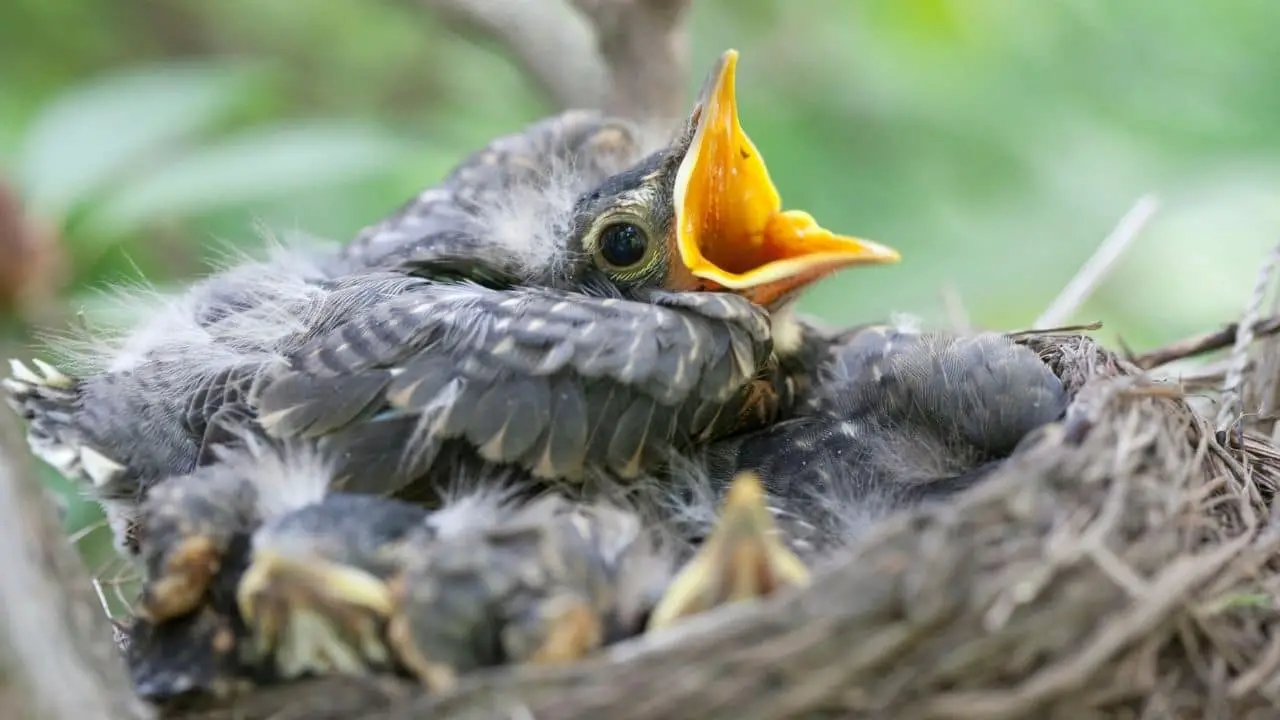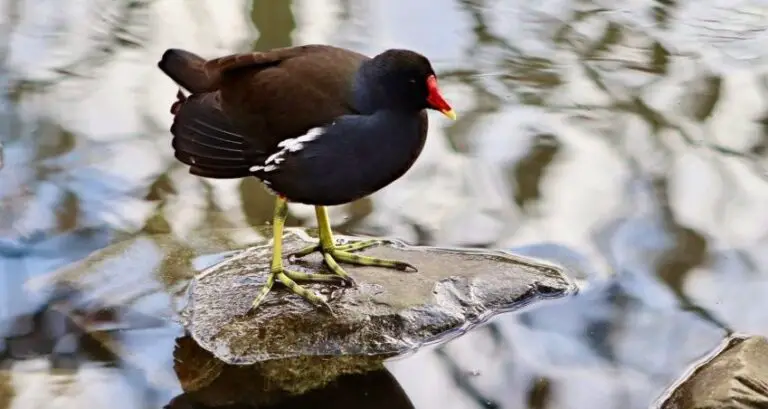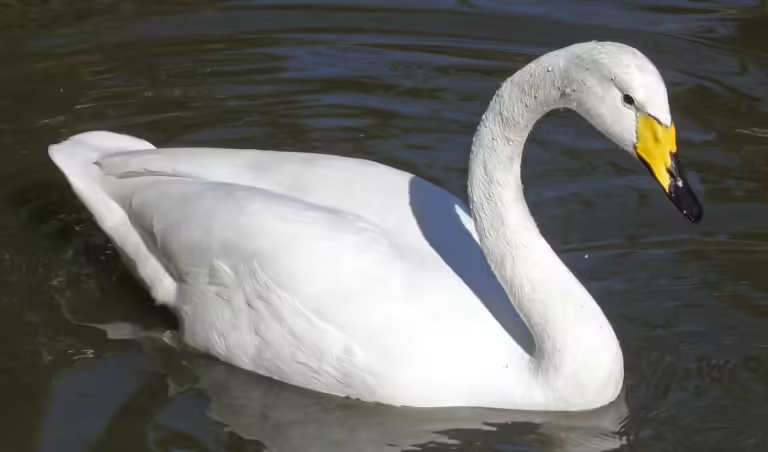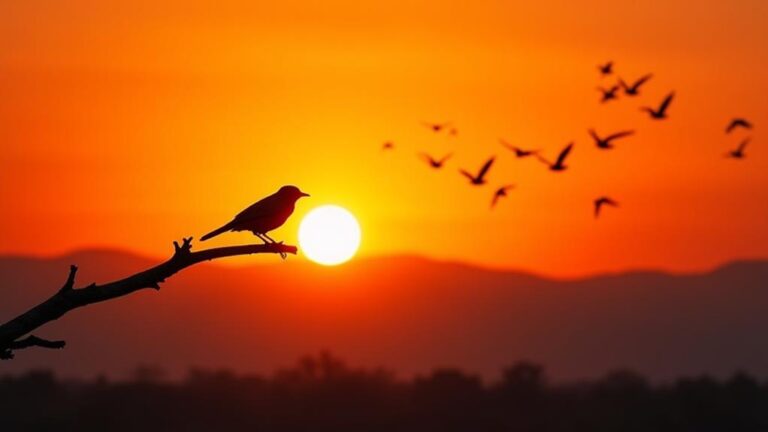How long do baby birds stay in the nest? Explore the stages of avian development and gain insights into the nurturing period before these young ones take their first flight into the world.
Are you ready to witness the awe-inspiring journey of baby birds as they take their first flight into the world? Get ready to be amazed as you delve into the enchanting world of nesting days. Just like a delicate dance, these tiny creatures go through a series of stages before they spread their wings and soar.
From the meticulous nest preparation to the momentous day they leave the nest, each step is a testament to their resilience and determination. In this article, we will explore the fascinating process of how long baby birds stay in the nest, offering you a front-row seat to the wonders of nature.
So, grab your binoculars and prepare to be captivated by their remarkable growth, parental guidance, and gradual journey towards independence. Get ready to witness the nesting days unfold before your very eyes.
Key Takeaways
- Baby birds stay in the nest for several weeks, during which they undergo significant growth and development.
- Parents play a crucial role in providing warmth, protection, and survival skills to their nestlings.
- Leaving the nest is a significant milestone for young birds, marking the beginning of their independent journey.
- Young birds quickly adapt to their new surroundings outside the nest, learning to find food and avoid predators for their survival.
Nest Preparation and Egg Laying
You can’t help but feel a sense of wonder as you watch the mother bird carefully select the perfect materials to craft her nest, creating a cozy and secure home for her precious eggs. She skillfully weaves twigs, grass, and feathers together, creating a sturdy structure that will protect her future offspring from the elements and predators.
Once the nest is complete, the mother bird begins to lay her eggs, usually one at a time, with a day or two in between. She carefully positions herself over the nest and gently deposits the tiny, speckled eggs. It’s amazing to witness this delicate process, knowing that each egg holds the potential for new life.
During this time, the mother bird rarely leaves the nest for long periods, as she is responsible for keeping the eggs warm and protected. She will occasionally take short breaks to stretch her wings and find food, but she always returns quickly to ensure the eggs’ safety.
As you observe the nest, you may notice the mother bird turning the eggs periodically. This helps to distribute the heat evenly, ensuring that each egg receives the warmth it needs for proper development. It’s fascinating to see the mother’s instincts at work, as she diligently cares for her unborn chicks.
Overall, the nest preparation and egg laying stage is a crucial time in the life of a baby bird. It sets the foundation for their development and survival, as they prepare to enter the world and face the challenges that lie ahead.
Incubation Period: Waiting for the Eggs to Hatch
During this period, you’ll be eagerly waiting for the eggs to hatch, experiencing a mix of anticipation and impatience. The incubation period is a crucial time for the parents as they diligently warm the eggs, ensuring their survival.
As you observe the nest, you may notice the parents taking turns to incubate the eggs. They will carefully adjust their body position, using their brood patch, a featherless area on their abdomen, to provide the necessary warmth. It’s fascinating to witness their dedication and commitment to their future offspring.
To engage you further, here are some interesting facts about the incubation period:
- The length of the incubation period varies depending on the bird species. For some birds, it can range from 10 to 14 days, while for others, it may take up to 40 days.
- During incubation, the parents rarely leave the nest, except for brief moments to feed or stretch their wings.
- The temperature inside the nest is crucial for the development of the embryos. The parents regulate the temperature by adjusting their body positions and the amount of down feathers covering the eggs.
- Some bird species synchronize the hatching of their eggs so that all the chicks hatch around the same time. This may increase their chances of survival.
- The parents communicate with their unhatched chicks by softly vocalizing or tapping on the eggs, creating a bond even before they hatch.
So, as you eagerly watch the nest, take a moment to appreciate the incredible process of incubation and the anticipation of new life about to emerge.
Hatching: The Arrival of Baby Birds
As the eggs crack open, a tiny beak emerges, signaling the beginning of new life unfolding before your eyes. You watch in awe as the baby bird gradually pushes its way out of the shell, revealing its downy feathers and fragile body. It is a magical moment to witness the hatching of these precious creatures.
The first few hours after hatching are crucial for the baby bird’s survival. It relies on its parents to provide warmth and protection in the nest. Their constant care and attention ensure that the nestling is safe and well-nourished. You can see the parents tirelessly bringing food, worms, and insects to feed their hungry offspring.
During this time, the baby bird’s eyes are still closed, and it is completely dependent on its parents. As the days go by, you notice a transformation taking place. The nestling’s feathers start to grow, and its eyes begin to open, revealing tiny black dots. It becomes more active, stretching its wings and wobbling around the nest.
The hatching period is just the beginning of the baby bird’s journey. It will spend several weeks in the nest, gradually growing stronger and more independent. You feel privileged to witness this incredible process, as the tiny creature evolves into a fully-fledged bird, ready to take flight and explore the world beyond the nest.
Feeding and Growth: The First Few Days
Feeding and growth in those first few days will surely be a breeze, with the parents tirelessly providing nourishment and care for their precious offspring. As you watch the baby birds in their cozy nest, you can’t help but marvel at the incredible journey they have embarked upon. Here are four things that will surely tug at your heartstrings:
- The parents’ unwavering dedication: Day and night, the parents tirelessly hunt for insects, worms, and other delectable treats to feed their hungry nestlings. Their selflessness and commitment to their young ones are truly awe-inspiring.
- The voracious appetites: You’ll be amazed at how much these tiny creatures can eat! Their constant chirping and gaping mouths are a testament to their insatiable hunger. It’s a joy to witness their rapid growth as they consume meal after meal.
- The fluffy feathers: As the days pass, you’ll notice the baby birds’ downy feathers slowly giving way to sleeker plumage. It’s heartwarming to see them transform from fragile hatchlings to robust nestlings, ready to take on the world.
- The bond between siblings: Nestlings often huddle together, seeking warmth and comfort. It’s heartwarming to see them cuddle and nuzzle each other, forming a strong bond that will carry them through their early days.
Witnessing these early moments of feeding and growth in the nest is a privilege that fills you with wonder and gratitude. Cherish these precious days as you watch the baby birds transform into independent, confident flyers.
Development of Feathers and Wings
The moment their downy feathers start to transform into sleek plumage, it’s truly fascinating to witness how baby birds develop their wings and feathers. This stage of their growth is crucial, as it prepares them for their first flight and the independence that comes with it.
During this period, the feathers of baby birds undergo a remarkable transformation. The soft, downy feathers are gradually replaced by stronger and more rigid flight feathers. This process, known as molting, allows the birds to develop the necessary strength and structure in their wings. It’s incredible to see how these delicate, fluffy feathers transform into strong, aerodynamic ones.
Simultaneously, the wings of baby birds also undergo significant development. At first, their wings are small and underdeveloped, making it impossible for them to fly. But as their flight feathers grow, the wings start to gain strength and size. Baby birds begin to exercise their wings, flapping them vigorously to build their flight muscles. It’s a joy to watch them practice, gradually gaining more control and coordination over their wing movements.
The development of feathers and wings is a crucial milestone in a baby bird’s life, marking the beginning of their journey towards independence. It’s a testament to the wonders of nature and the incredible adaptability of these tiny creatures.
So next time you come across a nest of baby birds, take a moment to observe their growing wings and feathers. It’s a truly remarkable sight.
First Attempts at Flight: The Fledgling Stage
Now that you’ve learned about the fascinating development of feathers and wings in baby birds, let’s move on to the next stage: their first attempts at flight, known as the fledgling stage.
This is an exciting time for both the baby birds and their watchful parents. As the nestlings grow older, their wings become stronger, and they start to exercise them by flapping vigorously. They may even hop around the nest or perch on the edge, preparing themselves for the big moment when they finally take flight.
During the fledgling stage, the baby birds gradually gain confidence in their flying abilities. They make short flights from the nest to nearby branches, building up their stamina and coordination. These flights are often wobbly and unsteady at first, as they are still mastering the art of flying. But with each attempt, they become more adept and eventually gain the skills needed for sustained flight.
It’s important to give these fledglings space and observe from a distance during this critical stage. Interfering with or trying to rescue them can disrupt their natural learning process.
So, as you witness these fledgling days, marvel at the determination and resilience of these young birds as they embark on their first flying adventures.
Practicing Flying Skills: Leaving the Nest for Short Flights
As you watch in awe, you can’t help but notice how the fledglings tentatively spread their wings and venture out from the safety of the nest for their first short flights. It’s a heartwarming sight to witness these tiny birds take their first steps towards independence. Their flight skills are still developing, so their flights are short and often end with a clumsy landing back in the nest.
During this stage, the fledglings are still reliant on their parents for food and protection. They return to the nest after each flight, where the parents continue to care for them. These short flights serve as practice sessions, allowing the young birds to build strength and coordination in their wings and muscles.
As the days go by, you notice the fledglings becoming more confident in their flying abilities. Their flights become longer and more controlled. They start exploring the surrounding areas, hopping from branch to branch, and even attempting to catch insects in mid-air.
Although they may still return to the nest to rest and receive food, the fledglings are gradually gaining the skills they need to survive on their own. It won’t be long before they are fully fledged and ready to leave the nest for good. But for now, you cherish these moments as you witness their journey towards becoming independent and skilled flyers.
Parental Guidance and Protection
Throughout this stage, the fledglings continue to rely on their parents for both nourishment and protection. As a baby bird, you still have a lot to learn, and your parents are there to guide you every step of the way. They will continue to bring you food, such as insects, worms, and berries, to ensure you grow strong and healthy. They will also protect you from any potential predators that may be lurking nearby. Your parents are always on high alert, watching out for any danger and ready to defend you if necessary.
During this time, your parents will also teach you important survival skills. They will show you how to find food on your own, how to avoid danger, and how to navigate your surroundings. They may even take you on short flights to further develop your flying skills. It can be a bit scary at first, but your parents will be right there beside you, guiding and supporting you every step of the way.
As you continue to grow and gain confidence, your parents will gradually allow you more independence. They will start to give you more freedom to explore and make your own decisions. However, they will still be nearby, keeping a watchful eye on you and ready to step in if needed.
Remember, even though you are getting bigger and more capable, it’s important to always listen to your parents and follow their guidance. They have a wealth of knowledge and experience that they want to pass on to you. So, embrace their guidance and enjoy the protection they provide as you continue to grow and develop into a strong and independent bird.
Gradual Independence: Exploring the Surroundings
Embracing their newfound wings, young birds spread their wings to explore the world around them, like a blooming flower reaching for the sun. As they venture out from the nest, their parents watch closely, ready to intervene if necessary. Here’s what you can expect as baby birds gradually gain independence:
- Short Flights: At first, baby birds take short flights close to the nest. They practice their flying skills, strengthening their wings and building confidence.
- Exploring the Trees: Once they gain more experience, young birds start exploring nearby trees. They hop from branch to branch, curiously inspecting their surroundings.
- Learning to Forage: Baby birds also begin learning to find their own food. They watch their parents closely, imitating their feeding behaviors until they can fend for themselves.
- Nighttime Return: While baby birds may spend most of their time away from the nest during the day, they often return at night to roost. This provides them with a safe and familiar place to sleep.
As they gradually become more independent, young birds develop the skills and knowledge they need to survive in the wild. Witnessing these nestling days is a precious experience, showcasing the wonders of nature’s journey towards self-sufficiency.
Leaving the Nest: The Big Day
On the big day, you’ll finally see young birds take flight from their cozy nest, spreading their wings wide as they soar into the endless sky. Leaving the nest is a significant milestone for these little ones, marking the beginning of their independent journey in the world.
It’s a bittersweet moment, filled with both excitement and a touch of sadness as you witness them leave behind the place they called home for weeks.
As they prepare to leave, you’ll notice the fledglings becoming more active and restless in the nest. They’ll flap their wings vigorously, testing their strength and getting ready for their first flight. It’s a sight to behold, witnessing their determination and eagerness to explore the world beyond their nest.
Once they muster up the courage, they’ll take a leap of faith and launch themselves into the air. At first, their flight may be a bit wobbly and unsteady, but with each passing day, they’ll become more confident and skilled. They’ll gradually learn to navigate the skies, relying on their instincts and natural abilities.
While it may be tempting to intervene or assist them during this transition, it’s important to let nature take its course. These young birds need the freedom to learn and grow on their own. So, resist the urge to interfere and instead, marvel at their bravery and resilience as they embark on their new chapter in life.
Life Outside the Nest: Survival and Adaptation
After leaving the nest, young birds quickly adapt to their new surroundings and learn to survive in the wild. Their first few days outside the nest are crucial as they navigate the challenges of finding food and avoiding predators. These brave little creatures have to rely on their instincts and learn quickly to ensure their survival.
One of the first things baby birds learn is how to find food. They watch their parents closely and imitate their behavior, learning where to search for insects, worms, and other small prey. It may take some trial and error, but eventually, they become adept at finding food on their own. They also learn to take advantage of different food sources as they become available throughout the seasons.
Surviving in the wild also means avoiding predators. Young birds quickly learn to recognize the sounds and movements of potential threats, such as hawks or cats. They become skilled at hiding and blending into their surroundings, using their natural camouflage to stay safe. Their parents teach them the importance of staying vigilant and alert, helping them avoid dangerous situations.
Adapting to life outside the nest is not without its challenges, but young birds are resilient and quick learners. They grow stronger and more independent with each passing day, preparing themselves for a future of freedom and survival in the wild.
How Long Do Baby Birds Stay In The Nest? FAQs
How do baby birds learn to fly?
Baby birds learn to fly by trial and error. It takes an average of 10-15 days for them to master the skill. They start by flapping their wings and gradually gain the strength and coordination needed to take flight.
What do baby birds eat while they are in the nest?
While in the nest, baby birds eat food that their parents have regurgitated for them. They rely on their parents to provide them with a nutritious and balanced diet during this time.
Do all baby birds leave the nest at the same time?
No, not all baby birds leave the nest at the same time. Each species has its own timeline for fledging, with some taking longer than others. It’s a gradual process that happens over a period of days or weeks.
How long does it take for baby birds to develop feathers?
Baby birds develop feathers in about 7-14 days. Did you know that during this time, their feathers grow at an astonishing rate of 10-20% per day? It’s fascinating to watch their transformation!
How do baby birds stay warm in the nest?
Baby birds stay warm in the nest by huddling close together and relying on their parents to provide warmth. They also have a layer of down feathers that helps to insulate their bodies.
Conclusion
Congratulations! You’ve now witnessed the incredible journey of baby birds from the safety of their nest to their brave departure into the world. Throughout their nesting days, these little ones have relied on their parents for guidance and protection. They gradually gain the skills they need to survive and adapt.
As you reflect on this remarkable process, you can’t help but marvel at the resilience and beauty of nature’s creations. So, with determination and grace, embrace your own journey in the spirit of these young birds’ perseverance.













